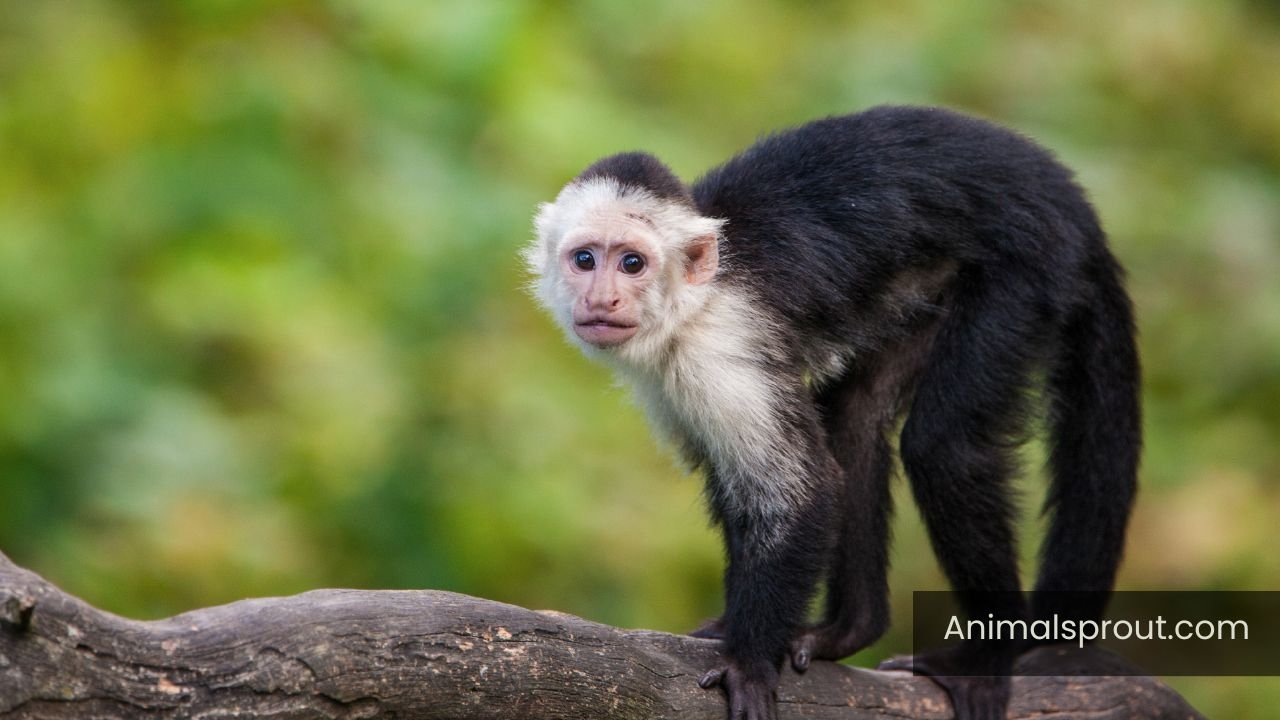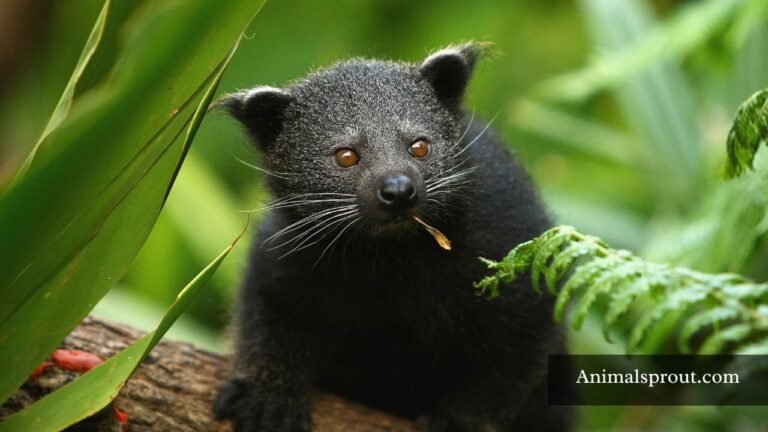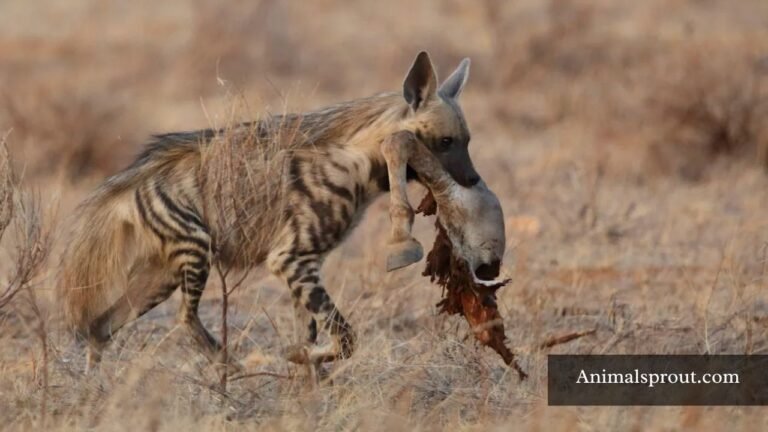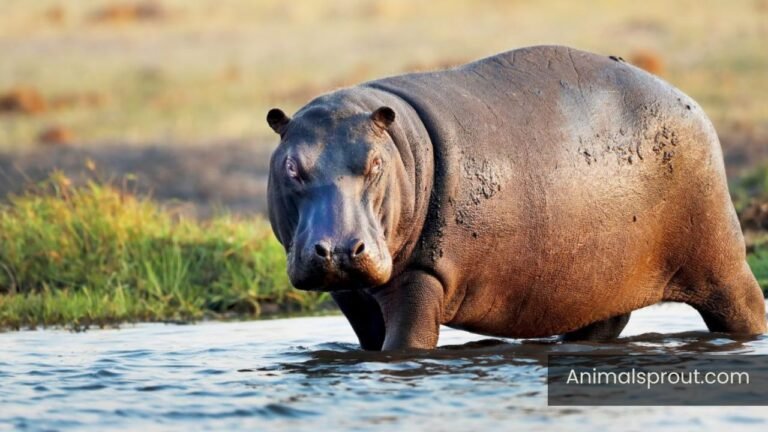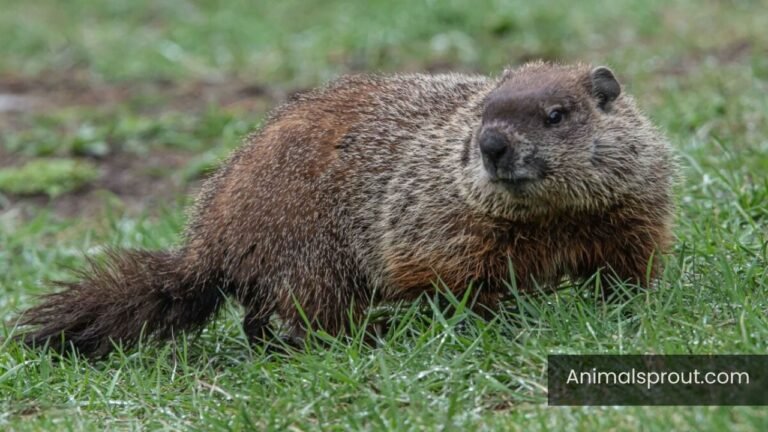Explore Top 19 Most Dirtiest Animals In The World (With Pictures)
The Most Dirtiest Animals In The World may surprise you and challenge everything you thought you knew about cleanliness in the animal kingdom. From their unique survival tactics to their often misunderstood behaviors, these creatures play crucial roles in our environment. Join us as we delve into the murky world of these unsanitary beings and uncover what makes them both repulsive and remarkable.
List Of Most Dirtiest Animals In The World
Below is the list of most dirty animals in the world:
| Number Of Animals | Names Of Dirty Animals |
| 1 | Hedgehogs |
| 2 | Bats |
| 3 | Vultures |
| 4 | Striped Polecats |
| 5 | Koala Bears |
| 6 | Seagulls |
| 7 | Hippos |
| 8 | Flies |
| 9 | Dung Beetles |
| 10 | Pigeons |
| 11 | American Bison |
| 12 | Sloths |
| 13 | Hagfish |
| 14 | Capuchin Monkey |
| 15 | Cape Buffalo |
| 16 | Narrow-mouthed Frog |
| 17 | Pigs |
| 18 | Rats |
| 19 | Cockroach |
Hedgehogs
Scientific Name: Erinaceus europaeus
Class: Mammalia
Hedgehogs, often celebrated for their adorable spines and endearing demeanor, carry a surprisingly unsanitary secret. These little creatures are notorious for their penchant for rolling in feces, particularly those of other animals. This behavior, known as “anointing,” serves a dual purpose: it masks their scent from predators and may also enhance their own scent to attract mates. While this quirky habit might seem bizarre, it is a fascinating adaptation that underscores the complexity of hedgehog behavior.

However, their unorthodox hygiene practices don’t stop there. Hedgehogs are also prone to carrying parasites like fleas and ticks, which can lead to further issues if not managed properly. Their natural habitats—often gardens or woodlands—are filled with potential contaminants, from rotting food to decaying leaves, which they may unwittingly roll in while foraging. Despite their reputation for being cute and cuddly, owning a hedgehog requires vigilance in maintaining their health and cleanliness, reminding us that even the most charming animals have their dirty little secrets.
Bats
Scientific Name: Chiroptera
Class: Mammalia
Bats often evoke a mix of fear and fascination, but their reputation as dirty animals is rooted in more than just folklore. These nocturnal creatures are notorious for their guano, the droppings that accumulate in their roosting sites. While many might see this as a nuisance, guano is actually a potent fertilizer that has been harvested for centuries, contributing to agriculture in ways that might surprise you. However, the build-up of bat droppings can lead to health risks, as it can harbor harmful pathogens like histoplasmosis, which affects the lungs when spores are inhaled.
Yet, it’s important to consider the ecological role bats play despite their messy habits. As natural pest controllers, they consume vast amounts of insects—up to 1,200 mosquitoes in just one hour! This not only helps maintain the balance in ecosystems but also reduces the need for chemical pesticides in agricultural settings. So while bats might have a dirty reputation, their contributions to biodiversity and pest management highlight a complex relationship between cleanliness and ecological health that’s often overlooked.
Vultures
Class: Aves
Vultures often get a bad rap for their scavenging habits, but these remarkable birds play an essential role in our ecosystem that is often overlooked. While they might not win any beauty contests, their “dirty” reputation is a badge of honor in the natural world. By consuming carrion—decaying animal remains—vultures help prevent the spread of disease and contribute to nutrient recycling in their habitats. Their highly acidic stomachs are equipped to neutralize harmful pathogens, making them nature’s clean-up crew and a critical line of defense against potential outbreaks.

Beyond their ecological importance, vultures exhibit fascinating adaptations that challenge our perceptions of cleanliness. Their bald heads, often perceived as unattractive, are actually a practical evolution; this feature allows them to stay hygienic while feasting on carcasses. Without feathers to trap bacteria, they can maintain their health even in the messiest of situations. Furthermore, vultures have an incredible sense of smell, enabling them to locate decaying matter from miles away—an ability that few other birds possess. This unique combination of attributes makes them one of nature’s most efficient recyclers, reminding us that what we perceive as dirty can often be essential for the health of our planet.
Striped Polecats
Scientific Name: Ictonyx striatus
Class: Mammalia
Striped polecats, often mistaken for skunks, possess a unique charm that belies their reputation as one of the dirtiest animals in the wild. These small, nocturnal mammals are notorious for their pungent defense mechanism—an impressive spray that can incapacitate predators and deter threats. However, what many might not realize is that this odorous secretion is not just a means of survival but also plays a critical role in their social interactions. Striped polecats use scent to communicate with one another, marking territory and signaling reproductive readiness, making their “dirtiness” a vital aspect of their ecological niche.
Beyond their infamous spray, striped polecats exhibit fascinating grooming behaviors that challenge the stereotype of being dirty. They engage in meticulous cleaning rituals, using their front paws to comb through their fur, ensuring they remain as tidy as possible despite their wild surroundings. This grooming helps remove parasites and debris, showcasing a remarkable adaptability to their environment. Their dual identity as both charmingly scruffy and surprisingly fastidious invites us to reconsider our perceptions of cleanliness in the animal kingdom, revealing how nature often blurs the lines between beauty and brutishness.
Koala Bears
Scientific Name: Phascolarctos cinereus
Class: Mammalia
Koala bears, often celebrated for their cuddly appearance and serene demeanor, have a surprisingly dirty secret: they are notorious for their hygiene habits—or lack thereof. While they may look like adorable bundles of fluff, koalas spend most of their lives nestled in eucalyptus trees, where they not only feast on leaves but also leave behind a significant amount of waste. Their droppings, which resemble small, dry pellets, can accumulate in their habitats, creating a rather unsightly mess. This behavior stems from their low-energy diet; the fibrous eucalyptus leaves provide minimal nutrients, resulting in frequent eating and subsequent waste production.
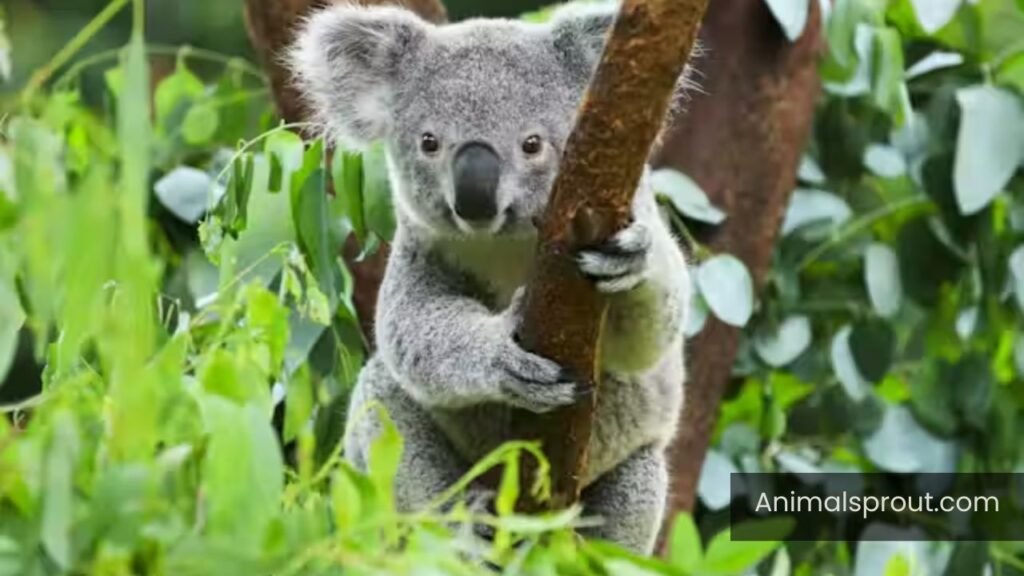
koalas are known to carry a range of bacteria and parasites that thrive in their unkempt living conditions. Their fur can be a breeding ground for various microorganisms, which may contribute to skin infections and other health issues. Interestingly, this lack of cleanliness plays a role in their ecological niche; it helps recycle nutrients back into the soil, promoting the growth of eucalyptus trees. So, while these marsupials may appear to live a life of leisure, their “dirty” lifestyle is intricately linked to the health of their environment, showcasing a fascinating balance between survival and ecological responsibility.
Seagulls
Scientific Name: Larinae
Class: Aves
Seagulls, often seen swooping over coastal areas and urban landscapes alike, are notorious for their scavenging habits. Their adaptability to various environments has earned them a reputation as opportunistic feeders, but this very behavior also makes them one of the dirtiest animals around. With their penchant for rummaging through trash cans and dining on discarded food, seagulls can accumulate harmful bacteria and parasites that thrive in their droppings. This not only poses risks to human health but also affects local ecosystems where they congregate.
Interestingly, seagulls’ waste is more than just a byproduct of their feeding frenzy; it serves as a double-edged sword in nature. While it can lead to unsightly messes and health hazards, their droppings play a crucial role in fertilizing coastal areas, promoting the growth of vegetation.
Hippos
Scientific Name: Hippopotamus amphibius
Class: Mammalia
Hippos are often perceived as the ultimate embodiment of cleanliness, frequently seen basking in the sun or floating serenely in rivers. However, beneath this seemingly serene exterior lies a fascinating truth: hippos are some of the dirtiest animals on the planet. Their penchant for wallowing in mud and murky waters isn’t just for comfort; it’s a vital part of their survival strategy. The mud acts as a natural sunscreen, protecting their sensitive skin from harsh sunlight while also providing a barrier against parasites and insects that could cause infections.
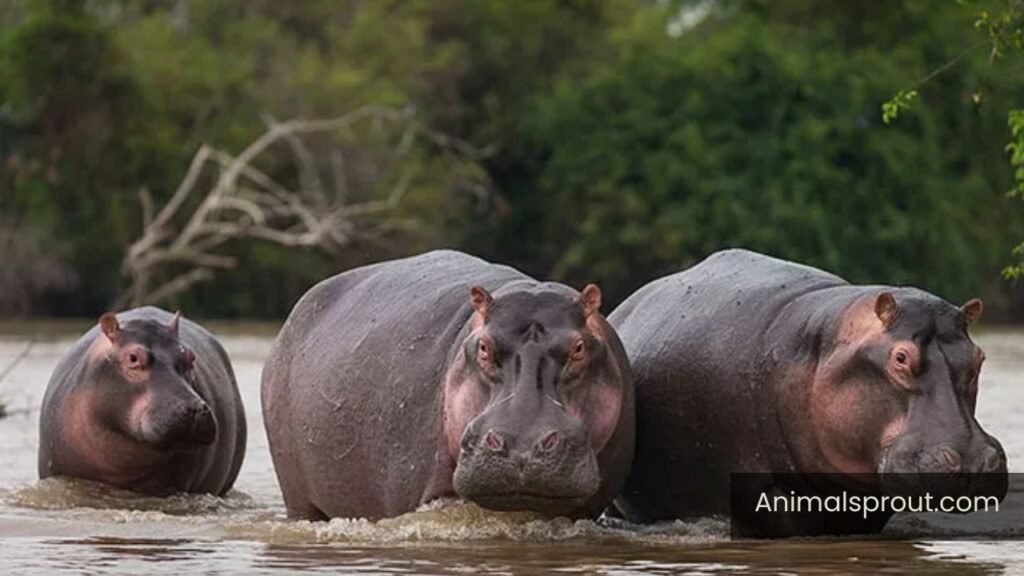
What’s even more intriguing is how their ‘dirtiness’ plays into the ecosystem. As they graze on grass and subsequently return to the water, hippos inadvertently fertilize aquatic environments with their dung. This nutrient-rich waste supports a diverse range of wildlife, promoting the growth of plants and algae that are crucial for maintaining healthy ecosystems.
Readmore: Explore Top 12 Animals That Have Long Faces.
Flies
Class: Insecta
Flies, often dismissed as mere nuisances buzzing around our picnics and homes, are surprisingly complex creatures with a fascinating ecological role. Their seemingly insatiable attraction to decaying matter and waste is not just about grossing us out; it’s an essential part of nature’s clean-up crew. By feeding on organic debris, they accelerate decomposition, breaking down waste that would otherwise pile up and contribute to the spread of disease. This natural recycling process ensures nutrients return to the soil, fostering plant growth and sustaining ecosystems.
However, the flip side of their dirty habits reveals a darker side: flies are notorious vectors for disease. They carry pathogens from filth to food, making them unwitting agents of illness. Studies show that houseflies can harbor over 100 different pathogens, including bacteria responsible for foodborne illnesses like salmonella and E. coli. This duality prompts a deeper reflection on nature’s balance; while flies play a crucial role in decomposition and nutrient cycling, their presence also serves as a reminder of the importance of hygiene in our daily lives.
Dung Beetles
Scientific Name: Scarabaeinae
Class: Insecta
Dung beetles, often overlooked in the animal kingdom, are nature’s unsung heroes, thriving in an ecosystem where most would shy away. These small insects, which can be found on every continent except Antarctica, play a crucial role in recycling nutrients and maintaining soil health. By feeding on and burying animal feces, dung beetles help to decompose organic matter, enriching the soil and promoting plant growth. This seemingly dirty job not only aids in waste management but also reduces greenhouse gas emissions by breaking down manure before it can release harmful methane into the atmosphere.
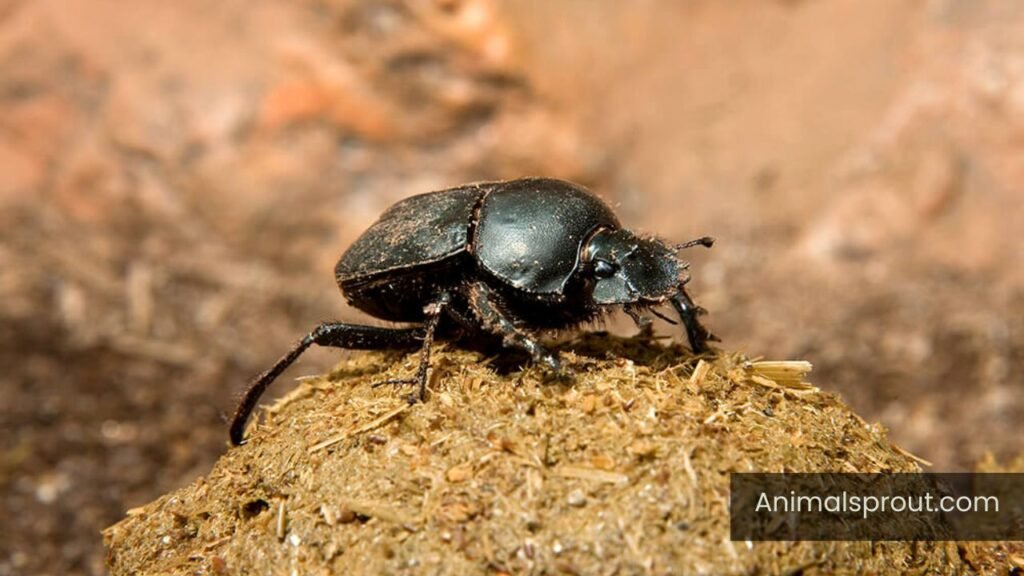
Dung beetles exhibit a remarkable array of behaviors that showcase their adaptability and intelligence. Some species, like the renowned Scarabaeidae, have been observed using the Milky Way as a navigation tool, rolling their precious dung balls under the stars. Others engage in elaborate rituals to compete for prime dung sources, showcasing a complex social structure that belies their humble appearance. Through this lens, these creatures embody resilience and resourcefulness, turning what many perceive as filth into a vital resource for life on Earth. Ultimately, dung beetles remind us that even the dirtiest jobs can have profound ecological significance, making them indispensable players in our planet’s health.
Pigeons
Scientific Name: Columbidae
Class: Aves
Pigeons often get a bad rap as urban nuisances, but their reputation as one of the dirtiest animals stems from more than just their propensity to congregate in crowded city squares. These birds are remarkable survivors, thriving in environments laden with human waste and pollution. Their droppings can pose health risks, carrying diseases like histoplasmosis and cryptococcosis, which can affect both humans and other wildlife. Yet, it’s essential to recognize that these birds play a crucial role in urban ecosystems, acting as scavengers that help break down organic material.
Pigeons possess an innate intelligence that belies their reputation. Studies have shown that they can recognize themselves in mirrors and have excellent navigational skills, often returning home from hundreds of miles away. This adaptability is a testament to their resilience; while their habitats may be unclean, pigeons are not inherently dirty creatures. In fact, they engage in preening behaviors to maintain their feathers and health.
American Bison
Scientific Name: Bison bison
Class: Mammalia
The American bison, often celebrated as a symbol of the American West, carries an unexpected reputation for being one of the dirtiest animals in the world. While their massive, shaggy bodies and majestic horns make them a favorite among wildlife enthusiasts, their habits tell a different story. Bison are notorious for rolling in mud and dung, a behavior that serves multiple purposes—most notably, pest control. By coating themselves in mud, they create a protective barrier against biting insects and sunburn, showcasing nature’s ingenious strategies for survival.
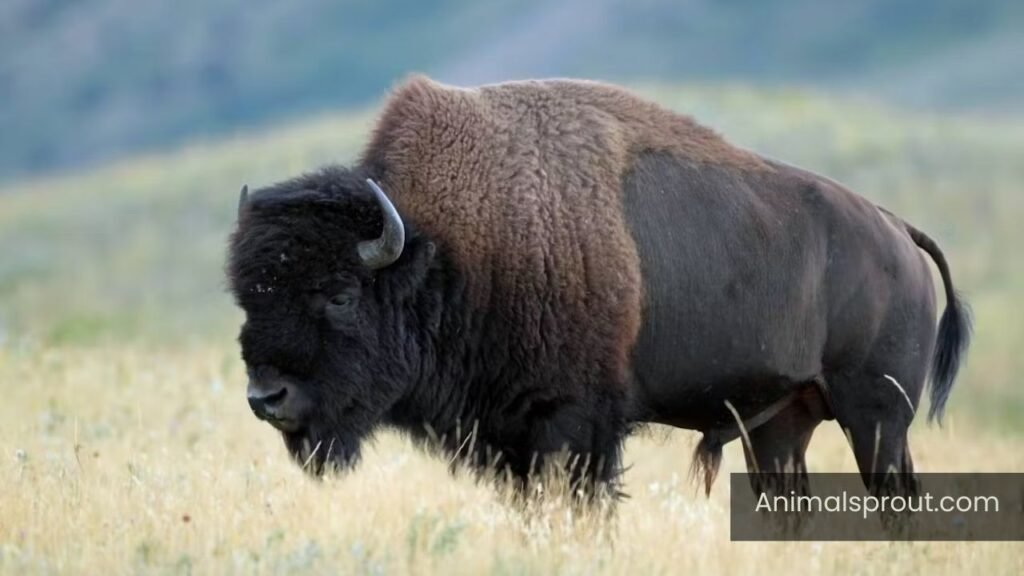
Moreover, bison contribute to their ecosystems in ways that might be overlooked. Their wallowing activities not only help them maintain their own health but also create small depressions in the ground that collect water and support various plant species. These wallows can become mini-ecosystems, attracting other wildlife and enhancing biodiversity. Thus, while their dirty demeanor may seem off-putting at first glance, it plays a crucial role in sustaining their habitat and supporting the intricate web of life around them.
Sloths
Scientific Name: Folivora
Class: Mammalia
Sloths, often celebrated for their slow and deliberate movements, carry an unexpected reputation as some of the dirtiest animals on the planet. Their fur, a shaggy coat of green algae, serves as both a camouflage and a unique ecosystem. This algae not only provides sloths with a degree of protection from predators but also offers a home to various insects and microorganisms. This symbiotic relationship transforms sloths into mobile mini-ecosystems, where their slow lifestyle inadvertently fosters a vibrant community of life.
Sloths are notoriously lax about grooming, leading to a buildup of waste in their fur. When they descend from trees only once a week to defecate, they risk exposing themselves to predators, showcasing a level of vulnerability that’s fascinatingly counterintuitive. This behavior highlights an evolutionary trade-off: by sacrificing cleanliness for safety in the canopy, sloths have evolved to thrive in their unique niches.
Hagfish
Scientific Name: Myxinidae
Class: Myxini
The hagfish, often overshadowed by flashier marine creatures, is a fascinating testament to nature’s ingenuity in survival. Known for their slimy, eel-like bodies, these jawless fish possess an extraordinary ability to produce copious amounts of mucus when threatened. This gooey defense mechanism not only helps them escape predators but also creates a thick, slippery barrier that can suffocate other fish. While this might seem disgusting at first glance, the hagfish’s slime is a marvel of evolutionary adaptation, showcasing how life can thrive in the murkiest depths of the ocean.
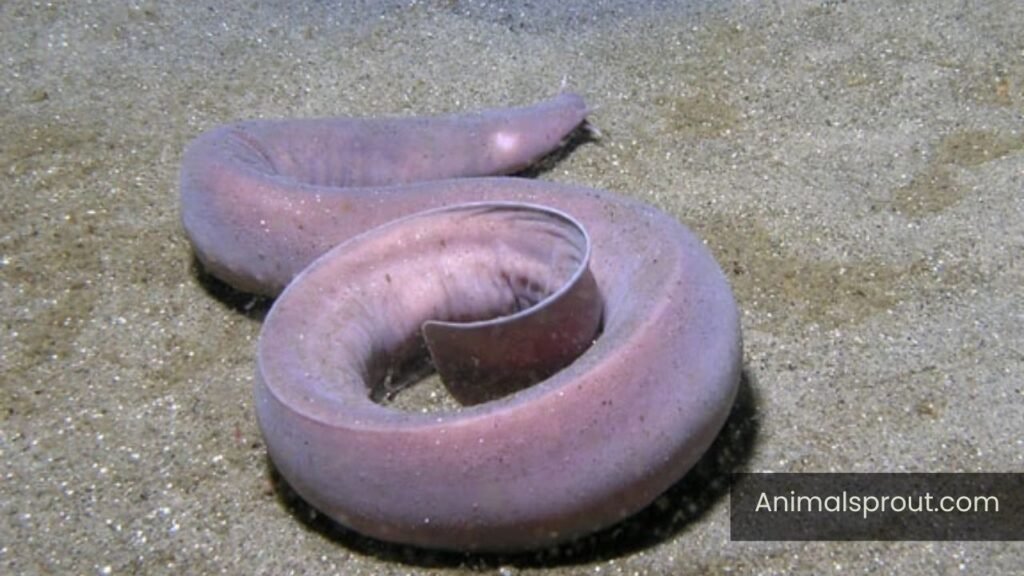
Beyond their infamous mucus, hagfish play a crucial role in the ecosystem as scavengers. Feeding primarily on carrion, they help recycle nutrients back into the marine environment, effectively cleaning up the ocean floor. Their unique feeding method involves burrowing into decaying matter, which might seem unappealing but is essential for maintaining a balanced ecosystem.
Capuchin Monkey
Scientific Name: Syncerus caffer caffer
Class: Mammalia
Capuchin monkeys, often regarded as the clever tricksters of the animal kingdom, have a reputation that extends beyond their playful antics. While their intelligence and social behaviors captivate wildlife enthusiasts, their grooming habits tell a different story. Unlike many primates that engage in meticulous grooming rituals, capuchins are surprisingly indifferent to personal hygiene. Their fur can often harbor dirt and parasites, reflecting a lifestyle that prioritizes foraging and exploration over cleanliness.
What’s particularly fascinating is how this disregard for grooming doesn’t hinder their social interactions. In fact, capuchins often rely on their vibrant social networks to navigate the complexities of their environments. This communal approach means that even with their dirty fur, they maintain strong bonds through tactile communication and play.
Cape Buffalo
Scientific Name: Syncerus caffer
Class: Mammalia
The Cape buffalo, often dubbed the “Black Death” by hunters, is a creature that thrives in the murky waters of Africa’s wetlands. While its reputation might suggest a fearsome predator, the truth is that this iconic beast revels in grime. Covered in mud and filth, the Cape buffalo uses these layers to protect its skin from parasites and the scorching sun, turning what many see as dirt into a survival strategy.
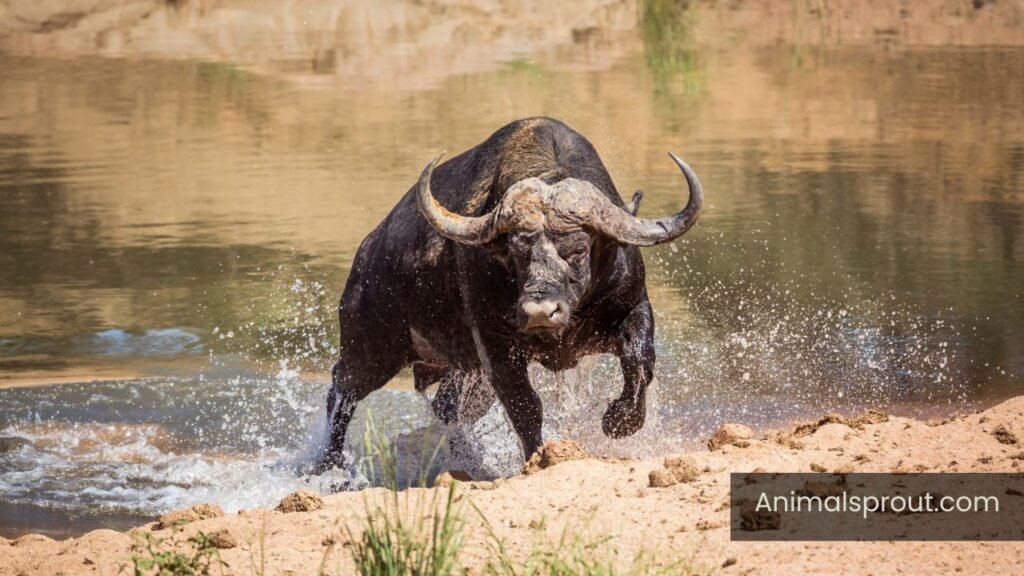
Their social structure plays a significant role in their muddy escapades. These animals are known for their strong herd mentality, often wallowing together in muddy puddles. This not only reinforces social bonds but also creates a communal barrier against pests. So, while they may appear dirty, it’s a testament to their adaptability and resilience in the harsh African landscape, showcasing nature’s ingenious ways of survival.
Narrow-mouthed Frog
Scientific Name: Microhylidae
Class: Amphibia
The narrow-mouthed frog, often overlooked in the world of amphibians, embodies a unique blend of charm and repulsion. Found primarily in tropical regions, these frogs are known for their peculiar habit of hiding beneath leaf litter and within crevices, which makes them masters of camouflage. However, their secretive lifestyle comes with a price; they often accumulate a thick layer of mud and grime that clings to their skin. This not only gives them a “dirty” appearance but also serves as a protective mechanism against predators, allowing them to blend seamlessly into their environment.
Beyond their muddied exteriors, narrow-mouthed frogs possess fascinating adaptations that challenge our perceptions of cleanliness in the animal kingdom. Their skin secretes a slimy mucus that helps keep them hydrated, especially in arid conditions, while also harboring beneficial microbes that contribute to their health. This microbial community, often viewed through a lens of dirtiness, actually plays a crucial role in their survival by providing resistance to disease.
Pigs
Scientific Name: Sus scrofa
Class: Mammalia
Pigs often get a bad rap for their perceived dirtiness, but this reputation overlooks their complex behaviors and intelligence. Contrary to popular belief, pigs are not inherently filthy creatures; rather, they roll in mud primarily to regulate their body temperature, protect themselves from sunburn, and ward off parasites. This natural behavior showcases their resourcefulness and adaptability in their environment. When given the chance, pigs exhibit remarkable cleanliness by designating specific areas for eating, sleeping, and relieving themselves.

Pigs possess an impressive level of cognitive ability that rivals that of dogs and even some primates. They can solve puzzles, understand commands, and engage in playful social interactions with one another. This intelligence not only enhances their survival skills but also highlights the need for a deeper understanding of their behavior beyond surface-level judgments.
Readmore: Explore Top 17 Arboreal Animals In The World.
Rats
Class: Mammalia
Rats often top the list of the dirtiest animals, but their reputation may be more complex than it seems. These resilient creatures thrive in environments that many would deem uninhabitable, scavenging for food in places where humans rarely tread. While they are notorious for carrying diseases, it’s essential to recognize their adaptability and intelligence. In fact, rats can learn from their experiences and even navigate mazes, showcasing a level of sophistication that belies their grimy image.
Interestingly, the very traits that make rats seem dirty also contribute to their survival. Their ability to reproduce rapidly ensures their populations remain stable, even in urban jungles where sanitation is lacking. Moreover, studies have shown that rats can play a role in ecosystems by helping to decompose organic matter, thus contributing to nutrient cycling. So, while they may scurry through sewers and trash, these creatures are more than just carriers of filth; they embody resilience and adaptability in an ever-changing world.
Cockroach
Scientific Name: Blattodea
Class: Insecta
Cockroaches often top the list of the world’s dirtiest animals, but their reputation is more complex than it seems. These resilient creatures are equipped with an impressive immune system that allows them to thrive in environments that would make most other species cringe. They can survive on a diet of decaying organic matter, and their penchant for inhabiting sewers and garbage dumps is what solidifies their dirty image. However, researchers have found that cockroaches can also play a role in decomposition, breaking down waste and recycling nutrients back into the ecosystem.
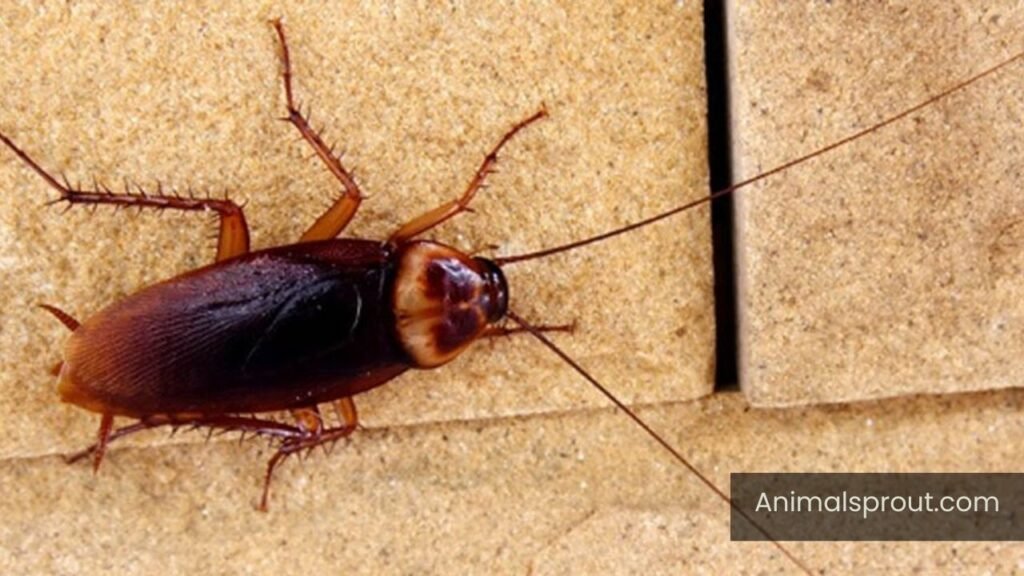
While they may carry bacteria and allergens that pose health risks to humans, cockroaches themselves have been shown to exhibit surprising behaviors. For instance, they communicate through pheromones and can even display social behaviors, suggesting a level of complexity often overlooked in these unappealing pests. Their ability to adapt rapidly to urban environments showcases not just their hardiness but also the intricate balance of life that exists even among the most reviled species.
Readmore: Explore Greedy Animals In The World.
Final Words
The world is home to some truly fascinating yet incredibly dirty animals. From the infamous cockroach to the ever-muddy pig, these creatures have adapted to their environments in ways that may seem unappealing to us humans. Their unique behaviors and habitats often contribute to the spread of germs and diseases, making them some of the dirtiest inhabitants of our planet. However, it’s important to remember that each of these animals plays a vital role in their ecosystems, despite their less-than-pleasant reputations.
FAQs
What is the dirtiest animal in the world?
The title of the “dirtiest animal in the world” often goes to the common pig, primarily due to its reputation for rolling in mud and filth. However, this behavior is largely misunderstood. Pigs use mud as a way to cool down and protect their skin from sunburn and parasites.
Are pigs dirty animals?
Pigs are often labeled as dirty animals, but this perception is largely misunderstood. While it’s true that pigs will roll in mud and dirt, this behavior serves important purposes. The mud helps them regulate their body temperature since pigs do not have sweat glands, and it acts as a natural sunscreen to protect their sensitive skin from sunburn and insect bites. In their natural habitat, pigs are actually quite clean and will designate specific areas for eating, sleeping, and relieving themselves.
Are rats dirty animals?
Rats often get a bad reputation for being dirty animals, but this perception is largely based on misconceptions. In their natural habitats, rats are quite clean and have specific grooming behaviors to maintain their hygiene. They spend a significant amount of time grooming themselves and their companions, which helps to reduce the spread of parasites and disease. They tend to create distinct areas for eating, sleeping, and eliminating waste, which further reflects their instinctual cleanliness.
Are sloths dirty animals?
Sloths aren’t inherently dirty animals, but their unique lifestyle does lead to some misconceptions. They spend most of their time hanging upside down in trees, which means they don’t groom themselves as often as other animals. This can result in a buildup of algae on their fur, giving them a greenish tint and making them appear unclean. However, this algae actually helps them blend into their surroundings, providing camouflage from predators.

